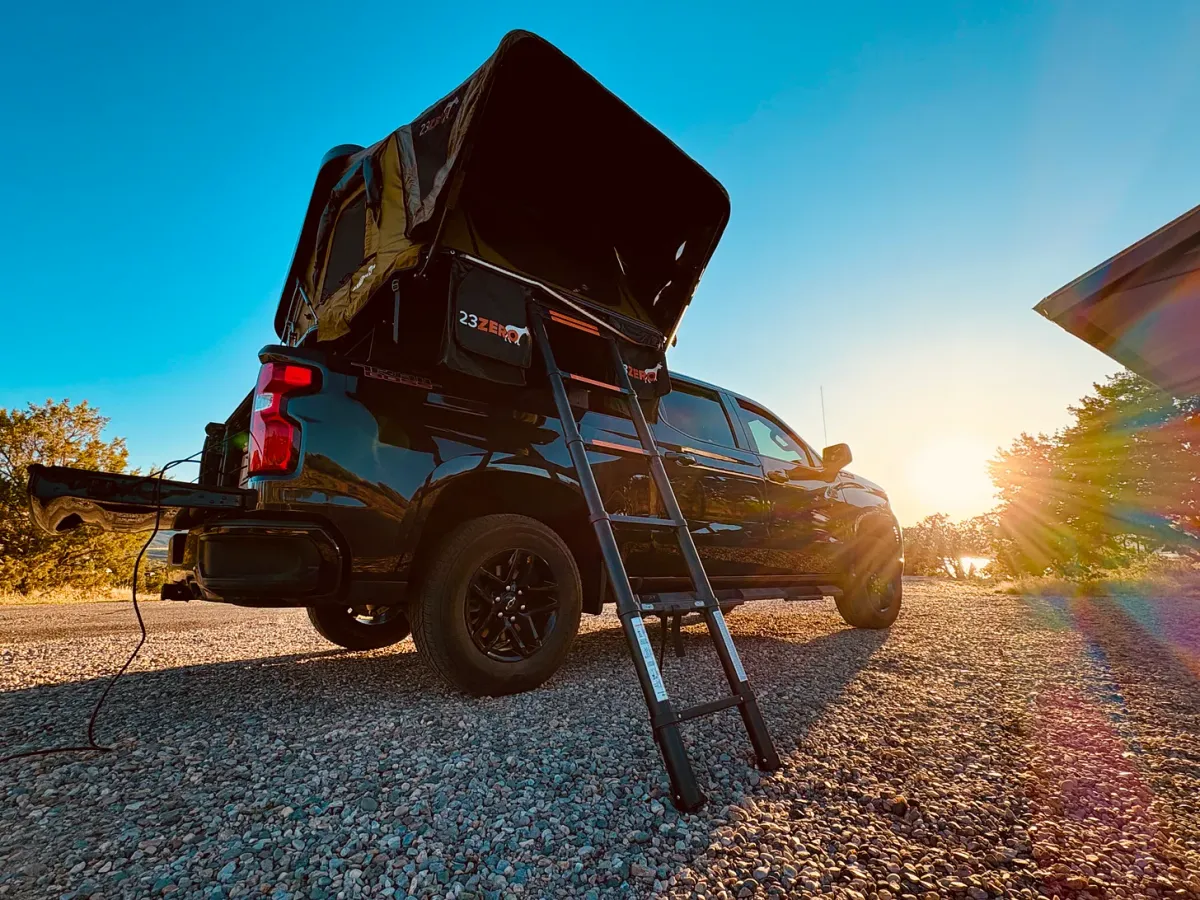If you’re considering a life on the road, whether part-time or full-time, you will have to decide how you will travel.
This can be a very challenging process so we want to share what we’ve learned the last few years based on experience and research.
There are several options when it comes to the traveling lifestyle and it will generally come down to your needs, your budget, and your comfort level as you go and live your adventure.
Most people we’ve met on the road own an RV or a travel van. Some live out of a pickup truck or car. A few of us choose to live in hotels or resorts.
Each mode of transportation or living arrangements has pros and cons.

Hotel Living
I’ll start with this since it’s what we do and are most familiar with.
Living in hotels and resorts has been a great option for us because we didn’t want to haul a trailer and didn’t have the funds for a motorhome or travel van. We also like the ability to move easily without all the added stress of a fifth wheel. So we just pack all of our required stuff in our Chevy Silverado 1500 and hit the open road.
It’s nice to pull up to a hotel after a day of driving and enjoy the amenities like free WiFi, a hot shower, laundry facilities, and a comfortable bed.
Sometimes we stay in nicer places like Club Wyndham Pagosa Springs and other times at a crappy Econolodge. It all depends whether it’s a weeklong stay or we’re just passing through to the next destination.
Overall hotel living has been good with very little problems. The biggest downside to this lifestyle is rude hotel guests and asinine hotel rates.
Additionally we’ve earned a LOT of free stays our Choice Privileges (which is one of the best rewards systems) and our Hilton Grand Vacations package (formerly DRI). We’ll share more about how we’ve used these benefits in a future issue.
Please note: When you travel to busy tourist destinations or National Parks it can be a real pain in the ass to find parking spaces. This is why a pickup or small car helps.

Travel Vans
We really wanted to purchase a travel van to explore the United States but after spending hundreds of hours researching and looking at them, the investment price and financing was just cost prohibitive for us at the time. Yet I’ll share what I’ve learned about it all so far.
New travel vans can cost $100,000 or more depending on whether you choose a Ford Transit, Dodge ProMaster, or Mercedes Sprinter. These are the three main brands, and of course, the Mercedes Sprinters average $150,000 at the time of this research.
Used vans with lots of miles have been holding their value at an average of $80,000 and up, especially if they have more options like showers and toilets.
If you’re handy with tools and construction and you have time to work on a van, the average DYI build costs seem to be between $40,000 and $60,000, though some people have done it for way less.
There are tons of options for travel vans as well!
If you love the minimalist lifestyle you can easily buy a van and throw in an air mattress, porta potti, Bluetti power station, install some solar panels, and save a lot of money by living off the grid on BLM land. Lots of people do this.
If you want more creature comforts, your travel van can be equipped with AC, heat, induction stove, bed, shower, TV, and all the other amenities you prefer. Of course the more you want, the higher the cost.
One thing you should know based on my conversations with other van lifers is that Mercedes Sprinters can be expensive to maintain and mechanics can be limited. I’ve heard some people had to wait for months to get repairs done. This does not seem to be an issue with Ford Transits or Dodge ProMasters. Therefore maintenance can be a real issue long term.
The positive aspects to van life is your home is easy to move, you can park almost anywhere, and there are typically less problems than with larger rigs.
Thousands of people are now doing van life because it opens up amazing opportunities you won’t get by living in hotels or owning an RV.

Motor Home RVs
If you have half a million dollars or more you could really be living the dream in a fully stocked Class A RV or large motor home that’s just as nice as a house, but if price is an issue, you can also find newer and smaller Class C RVs for a more reasonable price average of $60,000-$90,000.
Each class of RV can offer a broad range of sizes, amenities, and features. Some will be very basic and others filled with more high end gadgets than ever thought possible. The sky is the limit with these types of rigs!
While I didn’t do as much initial research for these types of vehicles because we’d never be able to afford one, I have talked with many travelers who live in them.
The common response is their owners absolutely love them because they are homes on wheels and they can stay in a favorite location long-term without having to worry about weather and other challenges.
On the flip side they’ve also said gas mileage sucks, maintenance issues are always a problem, parking at National Parks or tourist destinations is extremely difficult, and you can’t go off road in many great locations — which is why hauling a small vehicle behind is a common practice.

Fifth Wheel Trailers
Based on all my research, and having lived in a fifth wheel trailer for a home base, this is one of the best options for travelers if you have the patience and fearlessness to haul one … which I certainly don’t!!!
One of the appealing aspects to travel trailers or fifth wheels is they come in all shapes and sizes, and like motorhomes or travel vans, there are a large variety of features you can include in your travel home, making the road life experience as extravagant as you want it to be. Plus you’ll have more storage and space, in addition to being able to drop your trailer so you can your vehicle for outdoor excursions or beer runs.
Some of the most popular options at the moment are tear drop trailers. They’re easy to pull behind a truck or SUV, quick to set up, and simple to park. My personal favorites are Timberleaf and ROC trailers.
The costs for these types of trailers are very diverse. I’ve seen newer and smaller models going for $15,000 with an average price of $30,000. Larger rigs can range between $80,000 - $150,000.
As for the challenges, it can be harder to find places to camp as RV style lots fill up fast in popular destinations, gas mileage will be lower, and there are always maintenance costs.

Trucks and Car Living
Should you desire to do more off-roading or roughing it, living from a pickup truck or car is very easy to do. And interestingly I’ve seen a lot more people taking this approach for various reasons.
We’ve seen travelers outfit small vans and Subaru Outbacks with a bed, stove, water source, and composting toilet, giving them the basics they need to enjoy life from the road. These people carry the minimum of what they need and are extremely happy with their lifestyle choice.
The appeal of this is enticing and here’s why.
You’ll spend significantly less money outfitting your vehicle for your adventures than putting all that money in a prestigious travel van or larger rig. This means you can stretch your dollar, live more comfortably, and invest those savings into experiences rather than a home. It’s also simple to drive your vehicle and find a place to park, gas mileage is a hell of a lot better, and you can practically go almost anywhere..
Another aspect to trucks and cars are you can install a Roof Top Tent (RTT) like we did to give you a sleeping space outside of your vehicle. In our truck we have a Bluetti AC180 power station, BougeRV car fridge, electric grill, camping and survival gear, and even a portable toilet, so we can make do no matter where we go.
You really don’t need much to get going!
The biggest challenges to car living are space limitations and many campgrounds or RV parks don’t allow “car camping” because of the growing problem with homeless people. Many RV parks do allow roof top tents though but not all.

Decisions. Decisions.
As you can see there are some great options should you decide you want to join the road life experience. It all comes down to evaluating your real needs and budget constraints.
Many of the people we’ve met on our journey started off small and worked their way up to larger vehicle options. Others bought a larger rig and hated it, choosing to downsize to a teardrop trailer instead. Every person is unique.
But here’s the deal. You won’t know until you try it.
If you’re unsure about what might work best for your situation, there are now plenty of businesses who rent travel vans, motorhomes, and trailers. Cruise America seems to be a popular choice for travelers but there are others like them.
Hopefully this article helps you get started on choosing the best way to travel for your own adventure. And if you have any advice or feedback, we’d love to hear it.







Comments